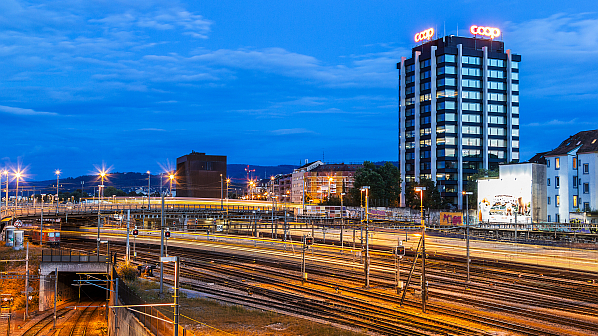A declaration on digitalisation in the railway sector was signed by 27 European state railway groups, freight operators and associations in Vienna on July 9, during the CEO summit organised by the Community of European Railway and Infrastructure Companies (CER).
Signatories to the Vienna declaration include French National Railways (SNCF), German Rail (DB), Italian State Railways (FS) and Swiss Federal Railways (SBB), as well as freight operators BLS Cargo and Lineas.
The declaration says that the signatories will further collaborate to fully exploit the opportunities for the railway sector provided by digitalisation and automation. As network capacity is one of the key levers for modal shift, they commit to “the swift Europe-wide implementation of long-term coordinated deployment strategies and models as the basis for an optimised performance for freight and passenger transport.”
As a key enabler to boosting the efficiency and competitiveness of the freight sector, the signatories commit to supporting the swift deployment of automatic couplings developed under the Digital Automatic Coupling for Europe (DAC4EU) project, conditional upon a sound migration plan and sufficient additional funding to ensure economic viability.
The declaration says that automatic train operation (ATO) has the potential to enable infrastructure managers to use the maximum capacity of existing routes and obtain considerable energy savings due to the optimisation of train operations. Consistent implementation of ATO by the signatories will increase the capacity of the Trans-European Transport Network (TEN-T).
On smart infrastructure, the signatories commit to investing in the rail network and modern technical solutions as a top priority, in order to significantly increase the potential to carry additional freight and passenger traffic by 2040.
They will cooperate with all parties to minimise average border transit times, and will increase the competitiveness of rail freight by reducing transit times, including the first and last mile, and developing the infrastructure for traffic management.
The signatories will also propose cost-efficient solutions that would enable regional lines to continue to act as important feeder and connecting routes.
The declaration says that closer cooperation between rail companies and European standardisation bodies is a precondition for maximising the potential of digital technology in freight and passenger operations. The signatories therefore commit to overcoming national operating specifications “to create a harmonised future European rail architecture within the System Pillar of Europe’s Rail.”
This will involve deeper cooperation to accelerate interoperability, and in particular the Europe-wide roll-out of harmonised technical solutions.
The signatories also support the removal of specific national rules that hinder interoperability as a prerequisite for smooth cross-border operation across Europe.
On ticketing, the signatories commit to further improve the passenger experience when planning international rail journeys and booking tickets. Passengers will have “seamless user experience”, with access to simple, reliable and comprehensive information on timetables and prices for rail services “through the implementation of harmonised sector-driven technical solutions.”
Passengers will be able to purchase international tickets from six to 12 months ahead of travel, with one ticket for journeys involving multiple operators and easy acceptance throughout Europe of tickets issued by different railways and ticket vendors.
The declaration says that digitalisation is already changing human resources strategies and will profoundly redefine future railway job profiles. The signatories commit to actively supporting employees to acquire new digital skills to maintain employability, and to ensure that employees are actively involved in any changes to their working environment.
To ensure that the railway sector can make full use of the potential offered by the digital revolution, the signatories call upon the European Commission (EC), European Union (EU) stakeholders and member states to increase funding for the deployment of ERTMS and ETCS, and to increase public funding rates up to 100% for both lineside and onboard equipment.
The signatories demand that a portion of the revenue from the EU’s Emissions Trading System (ETS) and the Social Climate Fund should be invested in the rail network and its digitalisation.
They suggest that the EC should conduct an assessment study, including a deployment plan, for the introduction of interoperable ERTMS up to 2030, 2040 and 2050, which should not only consider technical aspects but also the resources and financial support needed for successful implementation.
The declaration says that introduction of the Future Railway Mobile Communication System (FRMCS), currently under development to replace GSM-R, will require the coordinated deployment of 5G infrastructure along the railway. The signatories call on the European institutions for political and financial support for these projects.
The EC and other European decision-makers are also asked to take all the steps necessary to boost digitalisation in the areas of maintenance, capacity and path management, first and foremost being the rail sector’s Timetabling and Capacity Redesign (TTR) programme.
The signatories encourage the EC to foster an open and fruitful discussion on the creation of a resilient and sustainable Mobility Data Space based on reciprocity, interoperability and data sovereignty.
The EC is also asked to take all steps necessary to support through an adequate regulatory framework the smooth implementation of the Open Sales and Distribution Model (OSDM) developed to simplify international ticketing and distribution, including the integration of OSDM in the Technical Specification for Interoperability covering Telematics Applications for Passengers (TAP-TSI).

